In the fyp of life, The Gap seems to be popping up a lot for me.
The Gap is doing something right. They were way on top of the Parker Posey renaissance that ensued after White Lotus, making her the face of their spring campaign in a peppy dance video. They knew she was iconic before Gen Z discovered her. Now, their summer campaign, simply called “Gap Summer” is plastered on the glass walls of their Manhattan stores. It’s enough said, the clothes tell the story.
They’re selling something in between J.Crew and Brandy Melville. Halfway between Madewell and American Eagle. It’s certainly an All-American vibe with a lot of pinstripe and classic white linen pants. But it’s more attainable because, well, it’s Gap. Everyone knows they can buy Gap. Gap is in malls, Gap is for everyone.
The kicker is - the clothes aren’t actually cheap. I think you’d be surprised at the prices (but also the quality) if you walked in. They’re not quite Banana Republic prices, but you feel like you’re paying for something that’s actually great quality. Maybe I had confused them with Old Navy (same parent company), but I was shocked.
I walked into the Times Square Gap sometime in December looking for some work pants. That day, it just so happened that the entire store was 30% off. They had me hooked. I bought some slacks that were probably $50 after the discount - a good deal but also an investment in my work wardrobe. Not to mention that I love the way they fit.
From that moment in December, I started noticing the trends. Bold, bright colored sweaters and cardigans. Vests. Top to bottom denim. Honestly, just the color red across the board. The Gap was, frankly, with it. Their clothes easily rivaled the Madewell I had just been in. Gap was never on the map for me in this way before, possibly because I didn’t grow up with Mall culture. The girlies weren’t talking about Gap the way they talked about Zara. I decided to do some digging.
The value of Gap, Inc., which includes Banana Republic, Old Navy, Athleta, and Gap, has been declining since 2000, when it peaked at $40 Billion. It was known as the spot for uniform-esque clothes: khakis, navy blue, a white button-up, etc. This was pre-H&M and Zara, where mass consumption and fast fashion taught gen pop that we too could have our own sense of style. The Gap era of fashion wasn’t really about people discovering themselves or any sort of individual fashion sense. It was kinda the ol’ reliable. In 2023, Gap generated $14.9 Billion in sales.
It’s also worth saying that the decline of Gap probably has something to do with the decline of malls in America. In my opinion, not a lot of people are seeking out Gap stores (*yet), but it has the name recognition and could catch your eye in a mall. It hadn’t hit the online shopping scene in the way that its competitors had. This is all about to change.
So, how to save a dying brand? New blood. Richard Dickson, fresh off of leading Mattel through its Barbie movie resurgence, took the Gap Inc. CEO title in August of 2023. He hired Zac Posen in February of 2024, known as Tom Ford’s protégé and the former head of his own label, frequenting fashion weeks and Met Galas. Posen’s role is sorta muddy, but officially, he is an EVP and Creative Director. As for actual design, he just dropped his first Gap Studio collection.
You won’t believe it, but this narrative involves Sean “Diddy” Combs.
A side note about Zac Posen - he wasn't exactly the obvious choice for a job like this. In 2002, at age 21, he founded Zac Posen Design and very quickly became very famous for designing lavish ball gowns. Like everyone in Hollywood at the time, he met Diddy. Diddy’s company, Sean John, invested enough to acquire 50% of Zac Posen’s company, becoming the majority owner. But when a private equity firm called Yucaipa became a controlling investor of Sean John, they, in turn, gained control over Zac Posen Design. Thanks, Diddy.
In 2019, Yucaipa shut down Zac Posen and sold the intellectual property to licensing. Zac Posen's clothes are still available at certain retailers, but at this point, they are completely separate from the man himself.
This was a pretty public fall from grace for ZP. All this is to say, he started from a similar underdog status as The Gap itself.
Like I said, this fascination emerged because I just started noticing Gap more. All of a sudden, it feels relevant again. I’m impressed.
Dickson and Posen are obsessed with building Gap’s cultural relevancy. In its heyday, Gap did what Calvin Klein is known for now: they had huge celebrities from Joni Mitchell to Whoopi Goldberg to Joan Didion pose in plain white Ts. You were excited to see who the next Gap model would be. If you visit the Flatiron location, there’s actually a wall of these photos by the staircase.
What’s interesting is they didn’t just stick to movie stars, they thought about names that people admire. They picked tastemakers.
Maybe they are trying to replicate this today with their choices of Troye Sivan, Tyla, and Parker Posey to revamp the past year and a half. They aren’t really the “obvious” choice. Tyla and Troye Sivan are nowhere near the most-streamed artists in the world or the biggest names in music, but what they each do is pretty singular. And they’re both hot, which helps. Picking Parker Posey is even more on the nose: a star who was most famous in the 90s resurges in a new light.
“If you’re relevant enough, it eventually drives revenue.” - Gap CEO Richard Dickson
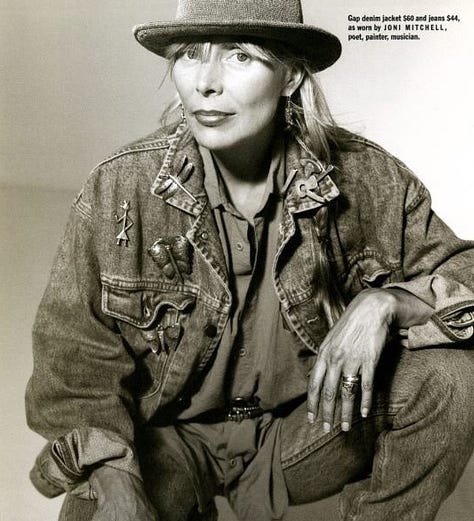
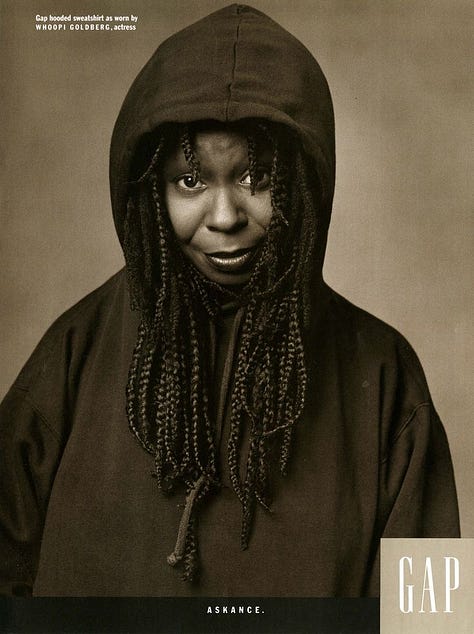
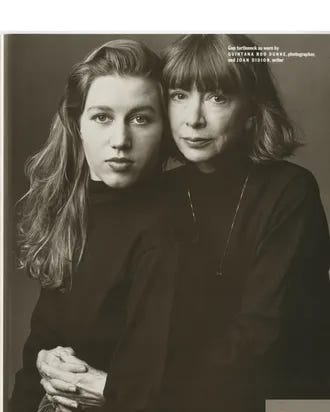
It’s strange because from my pov, nostalgia has always been in for Gen Z. We’ve always been into the 90s, always been into Y2K. At this point, we’re pushing a 2010s nostalgia wave (see Overcompensating). But what’s clear about this story is that our love for nostalgia doesn’t make us want to do irrelevant things or go back in time.
The nostalgia is not so strong that malls are making a comeback. The nostalgia is not so strong that we’re actually shopping at OshKosh B’Gosh. The nostalgia is not so strong that digicams replace nice iPhone photos. There’s a reason we’re past all of this. Convenience is still key, and relevance is still key. The nostalgia is not so literal but more of a feeling. Maybe it’s a certain look. Or maybe it’s a desire to return to what’s tried and true.
So, the challenge Gap faces is to position itself as a new, revamped, relevant brand that is still connected to the original things that made it famous. Dickson claims that the Gap’s decline was a result of a lack of taking risks. As a response, he hired Posen.
Otherwise, I’m not really seeing any risk-taking here. This feels like the trendy brand playbook, which is fine. Get Gap back on our minds through celeb endorsement and Met Gala legitimacy. Next thing ya know, they’ll have a TikTok account. That’s fine. It’s more like a return to form for Gap than anything else, which seems to be working.
I’m curious what the next big swing will be for Gap, Inc. In the meantime, I want this sweater.
The Mormon Wives are back. It’s still juicy, but this time, it’s a little sad. In season one we saw the quirky parts of being a bad Mormon: they got botox everyday and drank soda all the time. In season two, it’s more obvious just how fucked up their situations are. You’re a little more aware of the math behind being 23 and having 3 kids. The husbands and families all have a darker, more looming presence.
Please let this movie be good. Please please please.
Hey so what the fuck is this?
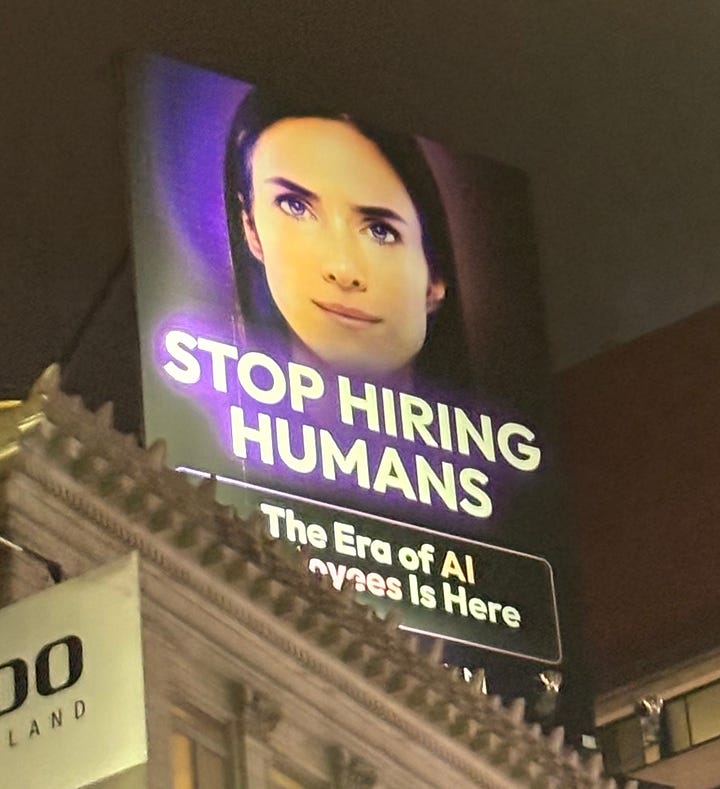
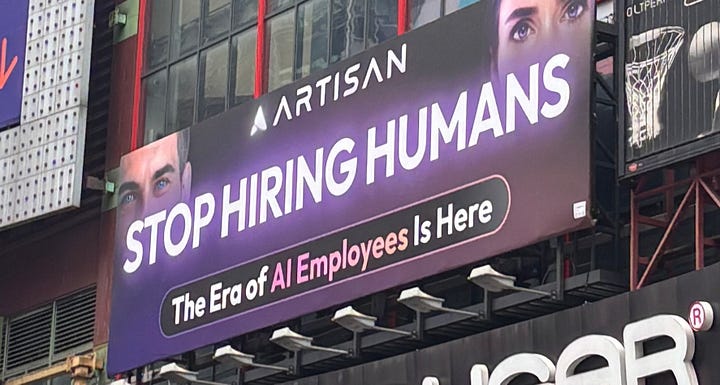
And what’s this all about?
NJ transit went on strike. It ended just in time for the Beyoncé concert and Princeton reunions. Phil Murphy and Eisgruber are certainly in cahoots.
Recently posted on Backstage and Actor’s Access, could this be season 3 of Nathan Fielder’s The Rehearsal? White friends, please submit.
Renovations completed at The Met. Also The Met roof is going to close until 2030!
The Summer Vogue cover star is … Hailey Bieber. How inspired.
Zohran Mamdani - top progressive candidate for NYC mayor - has maxed out his public fundraising, so supporters are independently forming a support PAC where you can continue to donate here.











